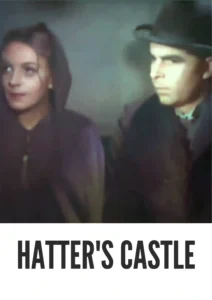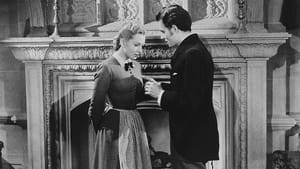Contact: info@alwanfilm.com
Video Sources 0 Views

Hatter’s Castle 1942 Colorized
Synopsis
Review: Hatter’s Castle 1942 Colorized – Exploring the Impact of Early Colorization

Introduction
In the annals of classic cinema, “Hatter’s Castle” (1942) stands as a compelling tale of ambition, obsession, and tragedy. Directed by Lance Comfort and based on the novel by A.J. Cronin, this film weaves a dark narrative set against the backdrop of early 20th-century Scotland. Recently, the film has been re-released in an early colorized version, sparking renewed interest and debate among film enthusiasts and critics. In this article, we delve into the significance of this colorized rendition and its impact on the viewing experience of “Hatter’s Castle 1942,” exploring its importance in the context of film history.
Check The Full Colorized Movies List
Check Our Colorized Movies Trailer Channel
Understanding Hatter’s Castle 1942 Colorized: Director, Cast, and Genre
“Hatter’s Castle 1942” is directed by the accomplished British filmmaker Lance Comfort, known for his ability to bring intense psychological dramas to life on screen. The film features an exceptional cast, with Robert Newton delivering a chilling performance as the tyrannical James Brodie, Deborah Kerr as his oppressed daughter Mary, and James Mason in a supporting role as Dr. Renwick.
Comfort’s direction ensures that the film’s gothic drama genre is powerfully realized, with an atmospheric setting and richly drawn characters. His vision for “Hatter’s Castle” encapsulates the essence of Cronin’s novel, translating its themes of power, pride, and downfall into a visually compelling narrative.
Exploring the World of Hatter’s Castle 1942 Colorized: Plot and Characters
“Hatter’s Castle 1942” is a dark and gripping tale set in a small Scottish town. The story revolves around James Brodie, a self-made hatter whose oppressive and egotistical nature wreaks havoc on his family and those around him. His daughter, Mary Brodie, struggles under his tyranny while seeking her own path to freedom and happiness.
The film captures the gradual disintegration of the Brodie family, as James’s hubris and cruelty lead to tragic consequences. Key moments include Mary’s secret romance with Dr. Renwick, the scandalous affair of Brodie’s wife, and the ultimate downfall of Brodie himself, who faces the repercussions of his relentless pride and harshness.
The Art of Film Colorization
Film colorization involves the process of adding color to black and white footage, a technique that has evolved significantly over the years. This process can enhance the visual appeal of classic films, making them more accessible and engaging for modern audiences. However, it also raises concerns about altering the original artistic vision and the authenticity of the historical context.
Colorization requires meticulous attention to detail, ensuring that the added hues complement the film’s mood and setting without overshadowing the director’s original intentions. When executed thoughtfully, it can bring a new dimension to the narrative, highlighting nuances that may have been less apparent in the monochrome version.
Early Colored Films: A Brief History
The advent of early colored films marked a significant milestone in the evolution of cinema. Techniques such as hand-painting frames, tinting, and toning were initially used to add color to black and white films, paving the way for more sophisticated methods like Technicolor.
These early efforts at colorization were groundbreaking, offering audiences a vibrant and immersive viewing experience. However, they also presented challenges in terms of cost, technical limitations, and the potential for compromising the original artistic vision. Despite these challenges, early colored films played a crucial role in shaping the future of cinematic storytelling.
Hatter’s Castle 1942 and Its Early Colored Version
The decision to release “Hatter’s Castle 1942” in a colorized format represents a bold artistic choice, inviting viewers to experience the film through a new lens. This version seeks to enhance the atmospheric tension and emotional depth of the narrative, bringing the gloomy Scottish setting and the intense drama to life with vivid colors.
The early colored version of “Hatter’s Castle 1942” offers a fresh perspective on Comfort’s visual storytelling, enriching the film’s gothic elements with enhanced color palettes. From the brooding skies over Brodie’s castle to the rich textures of the period costumes, colorization adds another layer of immersion to the film’s atmospheric storytelling.
The Debate Over Film Colorization
As with any significant artistic intervention, the colorization of classic films has sparked considerable debate among filmmakers, critics, and audiences. Proponents argue that colorization can revitalize classic films for contemporary viewers, making them more visually engaging and accessible. Detractors, however, contend that colorization can undermine the original artistic intent and historical authenticity.
The controversy surrounding film colorization highlights the broader tensions between preservation and innovation in the film industry. While some view colorization as a form of creative reinterpretation, others see it as a distortion of the filmmaker’s original vision. This ongoing debate underscores the complexities of balancing artistic integrity with the evolving tastes and expectations of modern audiences.
Examining Hatter’s Castle 1942 as an Early Colored Film
Viewing “Hatter’s Castle 1942” in its early colored incarnation offers a unique perspective on Comfort’s directorial approach and the film’s dramatic narrative. The added color enhances the visual storytelling, emphasizing the stark contrasts between the oppressive atmosphere of Brodie’s castle and the brief moments of warmth and hope experienced by the characters.
For some viewers, the early colored version of “Hatter’s Castle 1942” may heighten their appreciation of the film’s gothic elements and emotional intensity. The colorization brings out the rich details of the period setting and costumes, creating a more immersive and visually striking experience. However, it also raises questions about the balance between artistic reinterpretation and historical fidelity.
Influence and Legacy: Hatter’s Castle 1942 Colorized’s Impact on Cinema
Beyond its immediate impact, “Hatter’s Castle 1942” has left a lasting legacy in the realm of cinematic storytelling. The film’s exploration of themes such as power, pride, and downfall has influenced numerous filmmakers and continues to resonate with audiences today.
Comfort’s direction and the compelling performances of the cast have ensured that “Hatter’s Castle 1942” remains a touchstone for psychological dramas and gothic narratives. The film’s legacy is evident in its enduring popularity and its influence on subsequent works that explore similar themes of ambition, obsession, and tragedy.
Director’s Cinematic Legacy: Beyond Hatter’s Castle 1942 Colorized
Lance Comfort’s cinematic legacy extends far beyond “Hatter’s Castle 1942,” encompassing a diverse body of work that spans various genres and themes. His ability to create intense psychological dramas and his keen eye for atmospheric storytelling have cemented his reputation as a significant figure in British cinema.
Comfort’s other notable works, such as “Great Day” (1945) and “Portrait of Clare” (1950), further demonstrate his versatility and skill as a director. His films often delve into the complexities of human nature, exploring themes of morality, identity, and social dynamics. Through his nuanced character studies and evocative visual style, Comfort has left an indelible mark on the landscape of classic cinema.
Themes Explored in Hatter’s Castle 1942 Colorized
At its core, “Hatter’s Castle 1942” grapples with themes of darkness, violence, and morality, painting a stark portrait of the human experience. Through James Brodie’s oppressive rule and eventual downfall, the film examines the destructive power of pride and ambition.
The narrative delves into the psychological torment experienced by the characters, particularly Mary Brodie, who struggles to break free from her father’s control. The film’s exploration of power dynamics, familial conflict, and personal redemption resonates with audiences on a deep, emotional level, highlighting universal truths about human nature and the consequences of unchecked ambition.
Reception and Controversy Surrounding Hatter’s Castle 1942 Colorized
The release of “Hatter’s Castle 1942” in its early colored version has sparked both acclaim and controversy among critics and audiences. While some praise the added vibrancy and depth of the colorized rendition, others lament the departure from the film’s original monochromatic aesthetic.
Critics have lauded the film’s powerful performances, particularly Robert Newton’s portrayal of the tyrannical James Brodie and Deborah Kerr’s nuanced depiction of Mary. However, the colorization has also prompted debates about the impact on Comfort’s original vision and the film’s historical authenticity.
Where to Watch Hatter’s Castle 1942 Colorized Online
For those eager to experience the compelling drama of “Hatter’s Castle 1942,” the film is available on various streaming platforms, ensuring accessibility to audiences worldwide. Whether in its original black and white format or the early colored rendition, Comfort’s film remains a must-watch for fans of classic cinema and gothic dramas.
FAQs About Hatter’s Castle 1942 Colorized
Common queries surrounding “Hatter’s Castle 1942” range from its historical accuracy to its thematic resonance in modern times. By addressing these frequently asked questions, viewers can gain a deeper understanding of the film’s enduring appeal and cultural significance.
Q: Is “Hatter’s Castle 1942” historically accurate?
A: While the film is based on A.J. Cronin’s novel and reflects the social dynamics of early 20th-century Scotland, it takes artistic liberties with historical events and characters. Comfort’s focus is on the psychological and moral dimensions of the story rather than strict historical accuracy.
Q: What is the significance of the film’s title?
A: The title “Hatter’s Castle” refers to the home of James Brodie, the central character, and symbolizes his oppressive control and the psychological fortress he builds around himself and his family. The castle represents both Brodie’s ambition and his eventual downfall.
Q: What is the symbolism of the film’s imagery?
A: The imagery in “Hatter’s Castle 1942” is rich with symbolism, reflecting the film’s gothic themes and psychological depth. The brooding skies, dark interiors, and contrasting colors highlight the emotional turmoil and moral conflicts experienced by the characters, adding layers of meaning to the narrative.
Conclusion
In conclusion, “Hatter’s Castle 1942” remains a compelling and haunting film, its legacy enduring through the ages. While the early colored version offers a fresh perspective on Comfort’s masterwork, purists may still prefer the original black and white presentation. Regardless of personal preference, one thing remains clear: the power of “Hatter’s Castle 1942” lies not in its color palette, but in its profound exploration of human nature, ambition, and tragedy. As we continue to navigate the ever-evolving landscape of cinema, let us honor the timeless brilliance of Comfort’s film and appreciate its enduring impact on the art of storytelling.










